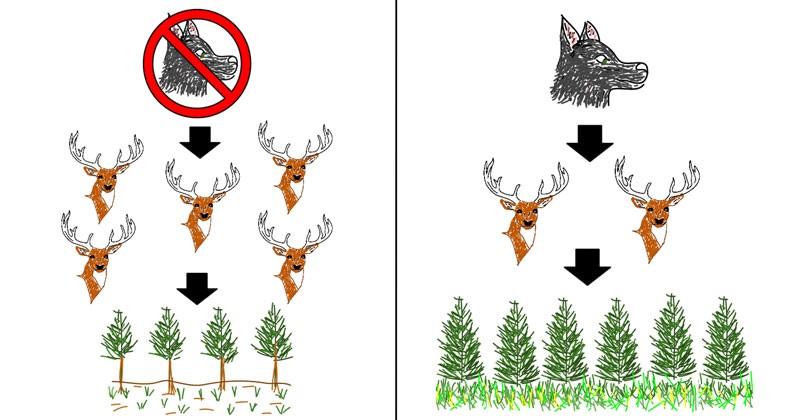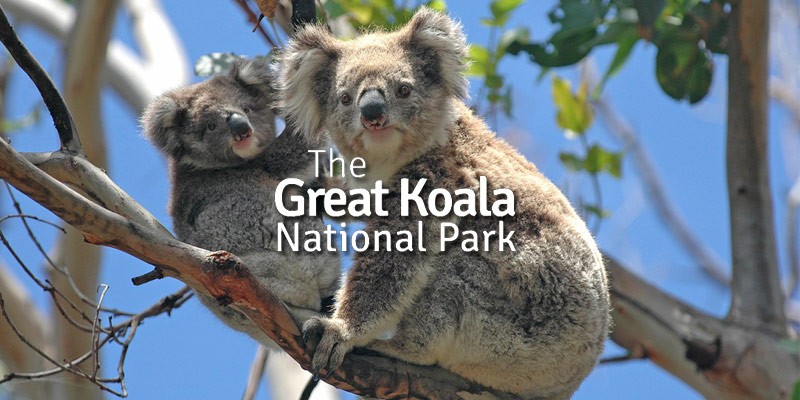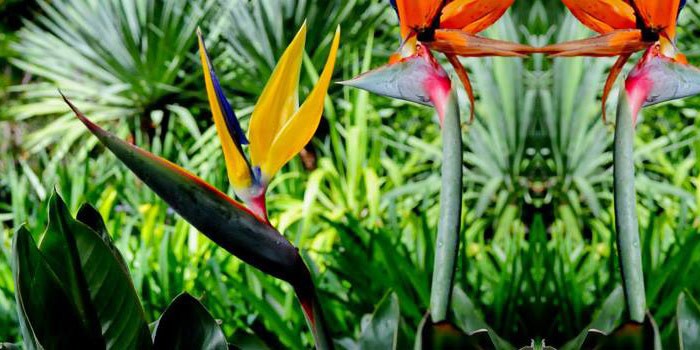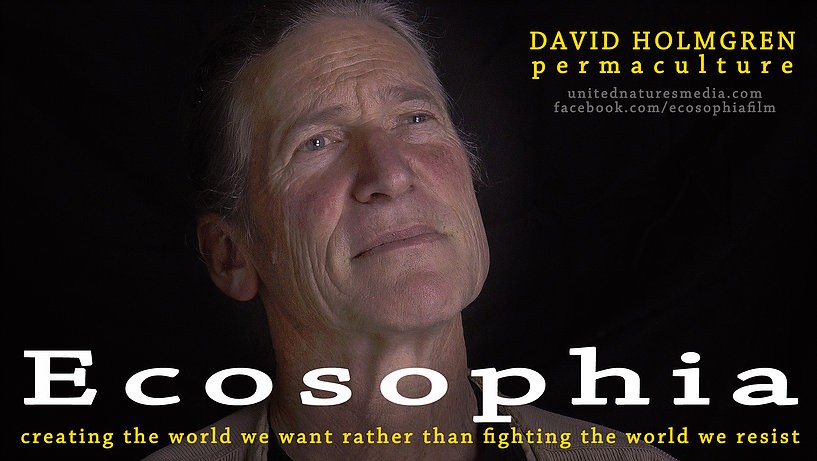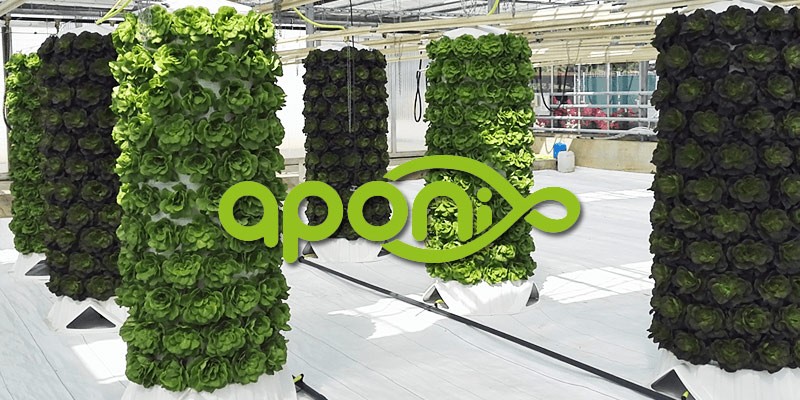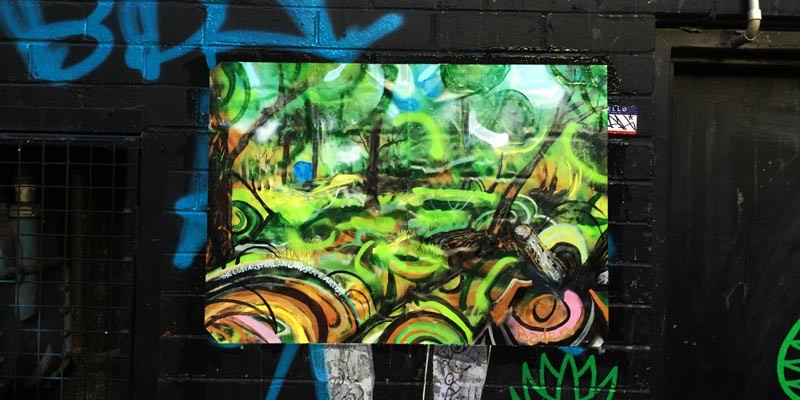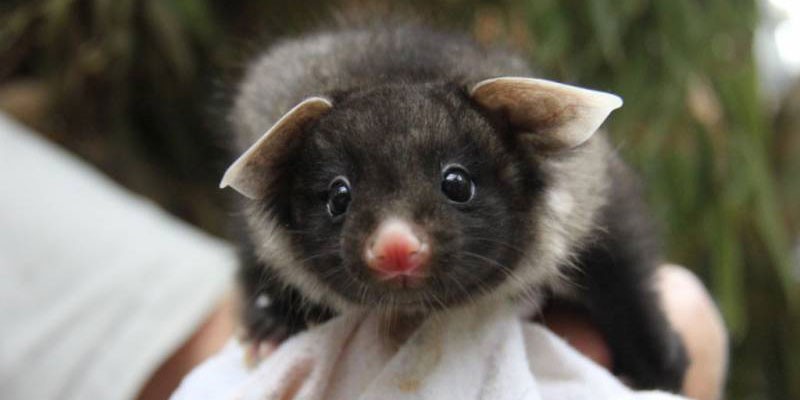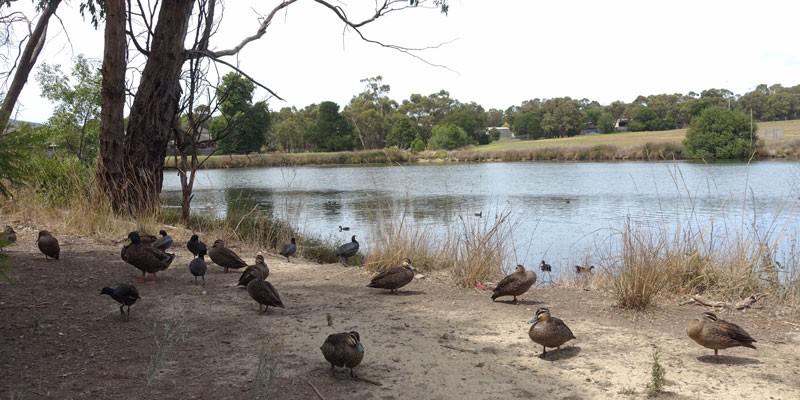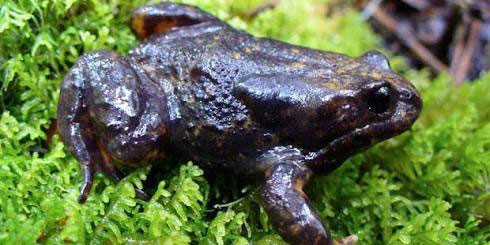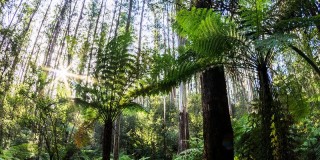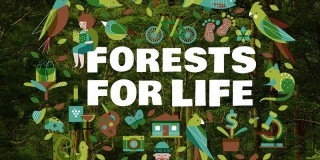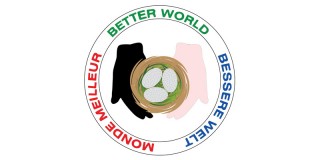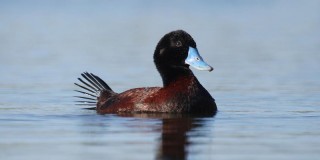Rewilding is large-scale conservation aimed at restoring and protecting natural processes and core wilderness areas, providing connectivity between such areas, and protecting or reintroducing apex predators and keystone species.
By making use of trophic cascades, ie. the effect that predators in an ecosystem have on the availability of resources, we can rewild areas where biodiversity has been lost. For example, by reintroducing predators such as wolves that prey on deer and other herbivores, we can increase the amount of vegetation available to other wildlife, and cascading down the chain, restore ecosystem biodiversity.

